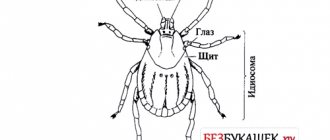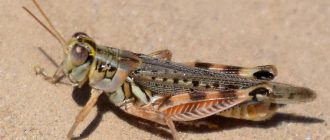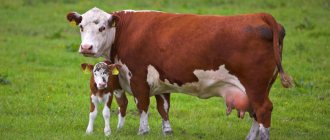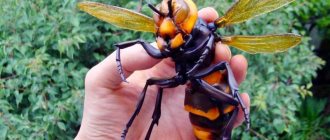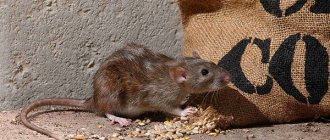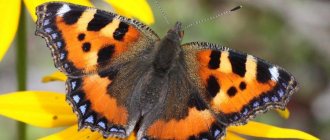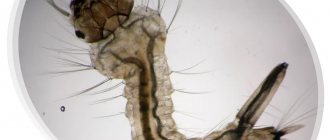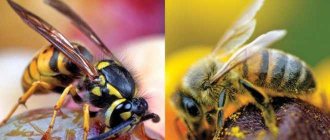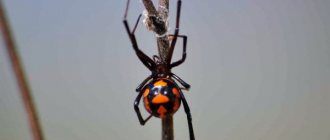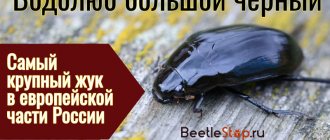The largest hare in the world (see photo in the article) is the hare, and it’s hard to disagree with this, because its size reaches about 70 centimeters in length! In Latin, the name of this species is Lepus europaeus.
It is an indigenous inhabitant of both the Eurasian and North African steppes, which over a long period migrated further and further north. Nowadays it can be found both in northern Finland and in hot Egypt. In this article you can see a photo of the largest hare in the world. Its weight will also be indicated.
Distinctive features
The hare is the largest hare in the world, and this is a generally accepted fact, since there are individuals whose weight reaches seven to eight kilograms. The most well-fed of them live in the cold north, which is also the limit of their habitat. And this is not surprising, since survival in harsh winter conditions requires a lot of subcutaneous fat. Moreover, the bunny’s skeleton is quite thin, because with a massive physique you can’t run far.
The hare differs from its closest relative, the hare, by its particularly long ears. After all, his ears rise above his head by as much as 10-14 centimeters! Its tail also stands out: both because it stretches an average of 10 cm, and because it is black and brown in color, which covers only its outer part. The hind legs are also much longer than those of the white hare, but the front legs are shorter.
The color of the fur coat of this hare varies from yellowish-gray, brown or fiery red to much lighter, but not snow-white. The color directly depends on the area and time of year, but it is known that even in winter the limbs and ears do not change their shade and remain dark.
The bunny's fur has a healthy shine and is soft and slightly wavy to the touch. Overall, this is a real beauty! And he is called a hare precisely because of his fur, which resembles brown hair of various shades.
Average size and weight of an adult hare
The hare is a small mammal that was once classified as a rodent. Now it belongs to the order Lagomorpha and the family Lagoraceae. Hares live almost everywhere, with the exception of Antarctica and Australia. There are just over 30 species of these animals in the world, which differ from each other in many ways.
The size of a hare usually depends on the following factors:
- breed;
- age;
- floor;
- habitat;
- nutritional conditions.
Most often, an adult hare weighs from 5 to 7 kg with a height of 65 to 70 cm. Its body is slender and slightly elongated. The ears can reach a length of 15 cm. The feet of the hind legs are also elongated, which helps the animal to run away from predators and reach speeds of up to 15 km/h, as well as jump to the side and abruptly change the direction of its movement.
Change of fur coat
In this regard, the brown hare does not lag behind other representatives of its family, therefore it also sheds in autumn and winter. The spring wardrobe change begins at the end of March and lasts up to eighty days, ending somewhere in the last month of spring. And in the fall, the fur coat is enriched with warm and soft undercoat, which replaces fallen guard hairs. This process lasts throughout the three rainy months, only occasionally dragging on until the beginning of winter.
Large breed group
The breed of English spotted rabbits also includes giants. The species was bred in England by crossing Belgian giants within the breed, which had a heterogeneous color. This rabbit is easily recognized by the extensive spots on its fur and the combination of primary colors: black and white, although this subgroup also includes the blue giant and smoky white.
A black muzzle, a white lower lip, creating the appearance of a butterfly, uniform black circles around the eyes, black ears, symmetrically scattered 6-8 spots with a diameter of 3-4 cm on the lower back and hips - this is the appearance of the English Pied. The coat is dense, elastic with hairs of about 3.5 cm. Body length is 66 cm and more. The rabbit has well-developed muscles, strong, fleshy, slightly spread ears, 15-17 cm long, widely spaced hind legs.
Standard weight requirements are related to the age of that rabbit. At the age of 3 years he should weigh 2.3 kg, at 5 years - 4.5 kg, and at 8 years - 6 kg. The breed is most often bred for exhibition.
The French ram (French aries) is a rabbit obtained in France around 1863 by crossing the Flemish giant and the English fold, a descendant of the European wild rabbit domesticated by the Romans.
These are also very large rabbits, reaching a weight of 6.5 kg. True, a lower weight of males is allowed (by about 10%). They are put together very harmoniously. They have a large head with a characteristic hump - a crown. The crown and very long (38-45 cm) fleshy silky ears hanging along the cheeks make this breed look like sheep. They have short front legs and very strong hind legs, a large neck and large, slightly protruding eyes.
The color of the coat is usually gray or white, but black, chinchilla, ash, and bluish are also found. The underside, belly and inner thighs are usually lighter than the back.
Females reach sexual maturity at the age of 6-7 months, and males are about a month behind them. A rabbit's pregnancy lasts 32 days. In 1 litter there are 5-10 babies, sometimes 12 are born.
Interesting facts about the domestic pig
The Moravian Blue Giant, whose ideal weight should be at least 5.5 kg, is a national Czech development and one of the oldest original breeds. It has a rounded body on very short legs and shiny smoky blue fur. Compared to other large breeds, the Moravian giant is more hardy and less demanding of food. The meat of this rabbit is valued lower than others due to its fibrous quality. Males of this breed are believed to be ideal for mating with females of other species to create commercial hybrids.
Area
The largest hare in the world is found almost everywhere on the vast territory of the Russian Federation - from Lake Onega to Transcaucasia. It was brought to the Krasnodar Territory, Altai, the Far East and some other parts of our huge country and took root everywhere except Buryatia.
At the end of the 19th - beginning of the 20th century, the hare became acquainted with the climate of North America (Canada, New York), and he lives well near the Great Lakes.
In addition, the hare has artificially settled in areas such as South America, New Zealand and South Australia. In the latter he became famous as a pest.
Types, photos and habitats of hares
7 most expensive flowers in the world
The variety of hares is very large. They inhabit a wide variety of biotopes from arctic deserts to true deserts; They live in forests, in open grassy areas, and climb high into the mountains.
In total, today there are more than 30 species of hares. Below are photographs of some of the most famous members of the genus Lepus.
Antelope hare (Lepus alleni)
It is found mainly in Mexico, where it is a common species. In hot deserts, it saves itself from dehydration by eating cacti and yucca. This species has the longest ears - 17 cm!
White hare (Lepus timidus)
This species lives throughout almost the entire territory of Russia with the exception of the south; inhabits the tundra, forest and forest-steppe zones. It differs from its relatives, first of all, in the shape of its tail: in the hare it is round, not wedge-shaped. By winter, he changes his usual reddish-brown outfit to snow-white, only the tips of his ears remain black.
White hare in a winter coat
American hare (Lepus americanus)
Lives in Alaska, California, on the shores of Hudson Bay, Dakota, Utah, Michigan. Similar to its counterpart living in Eurasia, but somewhat smaller.
Arctic hare (Lepus arcticus)
Its homeland is Greenland and the Canadian Arctic islands. It has perfectly adapted to life in cold climates and can tolerate temperatures of even -30°C without problems.
White-sided hare (Lepus callotis)
Found in Arizona and New Mexico. Endangered.
Cape hare (Lepus capensis)
Lives in northern Africa, Mongolia, and the Middle East.
Tolai (Lepus tolai)
Found from the Caspian Sea and northern Iran east through Afghanistan, Kazakhstan to Mongolia and China. Outwardly similar to a hare, but smaller.
Brown hare (Lepus europaeus)
It lives in Europe south to the north of Iran and Iraq, in Western Siberia, in the south of Scandinavia, in Great Britain. Common in places, but its numbers are declining. This is the largest species. Its body length can reach 74 cm, and its weight often reaches 7 kg.
Manchurian hare (Lepus mandschuricus)
Lives in northeastern China, Korea. In Russia, it inhabits the Far East, Amur Region, Primorsky Territory, and the south of Khabarovsk Territory. Its hind legs and ears are shorter than those of its brothers. The tail is also short, black and brown on top. The fur is quite hard and bristly.
Normal activities
This large hare lives primarily in open areas such as steppe, forest-steppe and open forest (as well as within forest boundaries). You can meet it near human settlements, in ravines, and near rivers.
Most often, the hare is attached to a certain territory, which it leaves only rarely, in cases related to a shortage of food resources. Its habitat radius is about fifty hectares. The path from the hare’s “bedroom” to the “kitchen” can be tens of kilometers. In the cold season, the animal prefers to feed near human habitation or on hills, where it is possible to dig up edible vegetation.
Individuals living in mountainous areas come closer to the water with the onset of autumn, and go back in the spring.
Darius is the current record holder
Today, the largest rabbit in the whole world is a long-eared pet named Darius. The giant animal comes from Great Britain and belongs to the “Continental Giant” breed. This breed has several other names: Flander, Risen or Belgian Giant. In the photo - Darius in the arms of his owner, Annette Edwards.
Today, the heavyweight weighs more than 22 kilograms, with a body length of 1 meter 30 centimeters. Despite its large size, the rabbit is very active and mobile. The owner believes that it was the combination of feeding with physical activity that gave such an amazing result. After all, the weight of an eared dog is greatly influenced by its muscles.
Night life
The largest hare in the world prefers to do its business exclusively in the dark, so you can meet it in the light of day only during the breeding season.
The hare is especially active at the beginning and end of the night. If circumstances are not the best, he can sleep for more than one day, remaining without food. In summer, the hare’s “bedroom” is a small hole dug under a fallen tree, in thickets of tall grass, in the shade of a large bush, or in the middle of a field. The hare does not suit himself with permanent housing, because he needs a hole only as a shelter from the scorching summer sun.
Often the largest hare in the world finds shelter in the burrows of its neighbors - foxes, badgers or marmots. The choice of a place for a hare's daytime rest directly depends on the characteristics of the time of year.
With the onset of spring, he chooses places warmed by the still timid rays of the sun, and during floods he prefers higher places.
In winter, the hare finds shelter among the snow covers, hidden from the icy winds. If the depth of the snowdrift is quite large, the hare digs holes up to two meters in length. There are often cases when a hare has an eye for a cozy haystack, prepared by practical villagers for their own purposes.
Which rodent of the hare family is the smallest?
The smallest representatives of the hare family are the Chinese hare and the tolai.
The body length of the Chinese hare is 30–45 cm, tail – 4–6 cm, ears – 6–8 cm, hind feet – 11 cm. Weight ranges from 1 to 2 kg. Their coat is short and stiff, and its color varies from chestnut to red. The underside of the body is lighter, and at the end of each ear there is a pattern in the form of a black triangle. Chinese hares live in China, Vietnam, and Taiwan in hilly areas with meadows and shrubs. They are usually active at night. Hares of this species do not make their own burrows, but prefer to rest in the abandoned homes of other animals. Their diet includes leaves and green shoots of various non-poisonous plants.
Tolai is another small hare, very similar in appearance to a brown hare. Its body length is 39–55 cm, weight is 1.5–2.5 kg. However, the ears and hind limbs of the tolay are almost the same as those of the hare: 8–12 cm and 7.5–11.5 cm, respectively. Hares of this species live in the mountains, desert and semi-desert areas of Kazakhstan, China, Mongolia, southern Siberia and the countries of Central Asia. Tolai usually live alone in the same area within 2 hectares. They are most active at night. Most often these hares roost in small holes under stones and bushes or in burrows of rodents, turtles, and foxes. In the warm season, tolai feeds on cereals, shoots, leaves, bulbs, tubers, seeds and roots of various plants. In the cold season, it eats dry grass, branches and bark of trees and shrubs.
Hares often become prey not only to their natural enemies. They are also hunted by humans for their skins and meat. In addition, they are considered one of the main pests of agricultural crops. Unfortunately, some species of hares are now extinct or endangered. People should take care of these animals, because their role in the ecosystem is significant. Not only do they provide a source of food for predators, but they also disperse plant seeds over long distances.
Reproduction
Hares often live in pairs, but this does not always happen. The brown hare acutely feels the need to continue the race during the cold days of February, and the male’s passion lasts until the very end of the summer period.
A hare's pregnancy lasts up to twenty days, and each individual individual is capable of giving birth up to two or three times a year, bringing up to four cubs at a time.
Hares are born sighted and after a week begin the transition from mother's milk to food common to adults. Their ability to reproduce begins by next spring.
Juveniles have a white star on the forehead, which is formed from several light hairs, and the ears, depending on various unfavorable conditions at this age, may be slightly torn. The bones of the skeleton are also quite fragile and easily vulnerable.
By the onset of advanced age, the weight of the largest hare reaches its maximum and, of course, depends on the habitat. Under favorable conditions, it can reach seven kilograms! The backbone at this age becomes stronger and plays an important role in the weight of the bunny.
About a quarter of the representatives of this species die from diseases associated with the digestive and respiratory organs, and most of them are still young hares. Floods, hunger and cold are difficult trials for hare, as they can suffer not only due to these factors, but also from becoming dinner for predators.
Care and maintenance of giant rabbits
Large breed rabbits can be kept in different ways: in cages, pens, semi-free methods
However, when caring for them, it is important to consider some features
Most giant rabbits are unpretentious in keeping, since almost all of these breeds were bred specifically for more convenient care
They are resistant to diseases, but it is important to take into account the quality of maintenance, make sure that there is no moisture in the cages and pens, there is no direct sunlight, and there are no drafts
With the right choice of nutrition, giant rabbits are more productive and fertile. If the food is chosen incorrectly, their reproductive qualities may drop to zero.
Whatever breed farmers choose, it is important to take into account the features of caring for them. In addition, before getting these animals, it is worth taking into account the climatic features of the region of their future residence and the ultimate goal of their breeding
The success of the planned business depends on this.
Hare menu
The diet varies depending on the time of year, which is not surprising, since the hare is (mostly) a herbivore. The hare menu looks something like this:
- Warm season: young twigs and shoots filled with juice, fresh leaves, dandelions, clover and other non-poisonous herbaceous plants. The hare likes to eat some vegetables, fruits and berries as a treat.
- During the cold season, vegetable remains and tree bark extracted from under the snow are the key to survival in harsh conditions. Moreover, hares often give preference to fruit-bearing trees, which irritates rural residents a lot. It is known that in particularly harsh winter conditions, hares eat partridges that are found in snares set by hunters. Therefore, we can say that the hare is still omnivorous.
Breeds of the largest rabbits in the world
Most often on the planet you can find huge rabbits of the following breeds:
- Belgian giant (Flanders);
- giant angora;
- Soviet chinchilla;
- gray giant;
- giant butterfly.
The largest breed of rabbits in the world is . This breed is often called Flanders, it is the most famous and most popular on the planet. Bred more than 400 years ago in the Belgian province of Flanders. The largest representatives of this breed reach 1 m in length. The ears of such a large hare are also quite long and most often reach 18 cm. On average, their weight varies from 6 to 8 kg, but the largest rabbits weigh from 9 to 12 kg.
The deservedly huge rabbits of this particular breed were included in the Guinness Book of Records in 3 categories at once: as the fattest, heaviest and longest rabbits on the planet. Female rabbits give birth to a litter of 7 or more rabbits. Despite their large size, the largest hares have been living among people as pets for quite a long time. They are smart, love children and care
It is very important to provide the hares with enough space to live. Due to their impressive size, they need spacious cages as well as plenty of food. And, of course, like any other living creature, a fat rabbit needs fresh air, so it needs walks in nature
And, of course, like any other living creature, a fat rabbit needs fresh air, so it needs walks in nature
And, of course, like any other living creature, a fat rabbit needs fresh air, so it needs walks in nature.
The largest rabbits include the Soviet chinchilla. At first glance, this is an ordinary rabbit, but in fact it is 2 times larger. The animals have good and valuable skin of a bluish tint, which is why they got their name. The weight of adult rabbits ranges from 5 to 6 kg. This breed is not picky about food. The animals grow quickly and gain weight, and adapt well to almost any climate and conditions. Therefore, breeding them is quite simple.
The next breed from the “largest individuals” category is. The weight of the gray giant is from 4 to 7.5 kg, and the body length is approximately 67 cm. They were bred by crossing the Flanders breed and ordinary mongrel rabbits. From the fattest animals they inherited large mass and size, the ability to quickly adapt to different climates and high immunity to diseases. Female rabbits are highly fertile and produce 7 to 10 rabbits per litter. The color of representatives of this breed is gray-hare, sometimes you can find animals with reddish-gray, dark gray, white and even black skin.
The largest breed of rabbits in the world is the Belgian giant.
Individuals of the white giant breed quickly gain weight from the first days. They are born large, up to 90 g, and by 3 months they already reach a weight of 2 kg. Moreover, for one litter the female brings from 8 to 10 rabbits. The average weight of an adult rabbit is from 5 to 8 kg, and the body length is up to 60 cm. Snow-white beauties adapt well to our climate and are highly resistant to adverse influences.
Another representative of fat rabbits is the giant butterfly. The giant butterfly, or spotted giant, stands out for its original and unusual coloring. Dark symmetrical spots merge on the white fur, reminiscent of the open wings of a butterfly. Adult animals at the age of 9 months reach a weight of approximately 5 kg. Female rabbits are quite fertile and produce a litter of 8 rabbits.
And even among such large animals there are record-breaking rabbits.
Interesting facts about hares
- The hare is the largest and heaviest of the family members.
- Hunger can force a hare to eat bird meat.
- This is a wild forest animal that is only cowardly in fairy tales. There was a case when a hare, raised by a shepherd, behaved like a real dog, bravely defending its honor among other dogs.
- The hare's eyes are not slanted at all, but are located on the sides of the wedge-shaped head for better visibility.
- Fleeing from danger, the hare meanders not just for the sake of “tangling” the trail, but also because of the asymmetrically developed left and right limbs.
- You can distinguish a male from a female by the presence of plumper cheeks and a thicker neck.
Now you know how much the largest hare weighs and what its height and weight depend on.
Breeding
Top 10 smallest horses in the world
Gray giants are classified as high fertility breeds. Individuals who have reached sexual maturity are allowed to mate: in males it occurs at the age of 6–8 months, in females – at 5.5–6 months. Overweight rabbits are not used for mating, as they are less fertilized and are not able to produce healthy offspring.
Gray “giants” are quite prolific; in one litter they can produce up to 14 rabbits
For mating, the female rabbit and male rabbit are placed in a common cage, having previously freed it from unnecessary objects (feeders, drinking bowls). After mating, they are seated in separate rooms. After 3-4 hours, mating is repeated.
Pregnancy lasts 28-30 days. About a week before giving birth, the female begins to pluck her fur, arranging a nest for her future offspring. Four days before birth, the baby rabbits begin to move inside the mother's belly. Typically, the number of rabbits in one litter ranges from 8 to 14. Gray giant females are caring mothers with high milk production, which allows them to feed all the offspring.
In the following video you can observe the behavior of the rabbit and her cubs:
Ralph Rabbit
Today, the largest rabbit in the whole world is a long-eared pet named Darius. The giant animal comes from Great Britain and belongs to the “Continental Giant” breed. This breed has several other names: Flander, Risen or Belgian Giant. In the photo - Darius in the arms of his owner, Annette Edwards. Today, the heavyweight weighs more than 22 kilograms, with a body length of 1 meter 30 centimeters. Despite its large size, the rabbit is very active and mobile. The owner believes that it was the combination of feeding with physical activity that gave such an amazing result. After all, the weight of an eared dog is greatly influenced by its muscles.
The primacy of Darius was repeatedly challenged by another representative of the “continental giant” breed. Twice in his life, a rabbit named Ralph was included in the Guinness Book of Records. The first time he managed to do this with a weight of 19 kilograms. But a year later, his relative, Darius, overtook his competitor, and then Ralph gained weight to 22 kilograms. The giant inherited his tendency to be overweight from his parents: at one time they were also awarded the title of the fattest rabbits in the world.
However, recently representatives of the Book of Records revised the requirements for the size of animals. Now the main criterion was not the weight of the rabbit, but the length of its body. The fact is that many owners overfeed their pets for the sake of the coveted title. In addition to the fact that this is a little dishonest, experts are seriously concerned about the health of giant animals: too much weight, typical of giant breeds, is fraught with obesity and a huge burden on the heart.
The former largest rabbit in the world is still considered one of the largest. All thanks to the sensitive care of the owner, Annette Edwards. For many years, the woman has been breeding rabbits - this activity has become her life's work and brings in a good income. This is not the first such large rabbit on her farm; before Darius there were Eli, Emmy, Bob, each of them gained about 10 kg of weight.
We suggest you read: Feeding rabbits with peas
Annette Edwards revealed the secret of how she manages to raise such huge rabbits - it’s all about proper competent care and the animal’s excellent appetite. Darius's daily menu includes two impressively sized heads of cabbage, six apples, and twelve carrots. If you think that Darius is a heavy, lazy carcass, then you are mistaken; the rabbit has a cheerful disposition and is in constant motion.
So we got to the largest rabbit in the world. This record holder comes from the UK. He was brought up under the guidance of Paulina Grant. He was once the official record holder, but in 2010 this honorary title was taken away by the rabbit Darius. But he stayed in 1st place for exactly a year, during which Ralph gained 4 kg and regained the title.
Ralph's care is based on the advice of the best veterinarians who are concerned about his health. A few years ago, doctors advised the girl to limit her pet’s food intake. Paulina listened to the recommendations, but the rabbit did not stop growing.
In general, according to the owner, the rabbit is in excellent shape. Every day, the record holder eats record amounts of food - a head of cabbage, eats several slices of black bread, feasts on bunches of lettuce, and cannot do without a couple of apples and half a cucumber. Sometimes he indulges in a couple of crackers with cream filling. The owner admits that without the support of fans she would not have been able to feed the fat man on her own.
The largest breeds of rabbits
Today, about 83 breeds of rabbits are known. Of these, about 20 breeds can be distinguished as truly large species. It is customary to divide rabbits into giants and giants. Often the difference in these names is small and depends not on the specific breed, but on body weight.
The giant rabbits include the following “eared” ones: Gray Giant, White Giant, Belgian Flanders, Continental Giant Champion breed others. Of all the large individuals, these are considered the most famous in the whole world. The distinctive features of these species are the quality of their coat, color, size, ear shape and habitat.
This breed was bred by breeders
Butterfly
Weight: 5 kg
Butterfly rabbits were bred in 1884 in England. They have amazingly beautiful colors. Breeders tried to improve this species as much as possible. To achieve this, complex work was carried out.
The fur is delicate, thick and very shiny. The color is mostly white. The body is covered with various spots. Currently in demand in the market. They are particularly unpretentious in care and resistant to various climate changes.
It is worth noting that the offspring almost always survive. Can be kept in cages or enclosures. They are not at all prone to whims in their choice of food. If desired, they can be fattened to larger sizes.
Domestic rabbit - description
The animal belongs to the order Lagomorpha, the hare family. It can become a member of the family - a domestic decorative rabbit pleases the eyes of its owners with its cute appearance. It has the following characteristics:
- The body is well-fed and oval in shape. The body length can be 20-55 cm.
- Weight can be from 400 g to 2 or more kilograms.
- The head has a rounded shape. The length of the ears is up to 10 cm.
- The hind legs are large and powerful, with 4 toes. The front paws are five-toed. The claws are sharp and strong, the animal is a digitigrade.
- The number of teeth in an adult is 28. Powerful incisors are located in front; there are no fangs.
- It has soft long hair, the color of which can include gray, yellow, and brown shades. There are decorative rabbits with a uniform coat color.
Behavior of rabbits at home
The character of a rodent is interesting, and knowing all its subtleties, you can easily find a common language with your pet. Important points. domestic rabbit related:
He is inquisitive, so he strives to explore every corner of the house. It can be capricious and even touchy, and it shows its displeasure by hitting the floor with its hind paw.
He loves attention and communication with his owners, but he needs personal space. If you don’t want to experience harm from your pet rabbit, try to hide anything that can be chewed from your inquisitive pet.
The animal quickly learns to use the tray. He easily begins to trust a person and shows signs of attention - he nudges him with his nose when he wants to say hello, communicate, or thank him. He prefers to rest during the day, so he doesn’t like it when the house is noisy at this time, and in the evening he likes to run around, fool around, and play. A rabbit in the house is a family member who will ask for treats, and if he is denied them, he will be offended. Easily remembers his nickname. It is almost impossible to stop him from marking his territory if he is not neutered. Doesn't like strong smells.
How long do decorative rabbits live at home?
The average lifespan of rodents is 5-8 years. Neutered individuals can live more than 8 years, and some live up to 12 years. How long domestic rabbits live depends on proper care for them
Animals need good nutrition, the creation of the necessary conditions for their life, care, attention, and then they live as long as possible. If all this is not provided to the rodent, its life expectancy will be reduced.
Breeds of domestic rabbits
About 200 species are known, but popular breeds of decorative rabbits can be distinguished:
- Shorthaired dwarf
. It is also called the colored rabbit. The animal has a stocky body, cylindrical in shape, and medium-sized ears up to 5.5 cm long. The animal’s coat is shiny and smooth. - Dutch dwarf rabbit
. The eyes, ears, and back of the body of a representative of this breed are indicated by a dark color, the rest of the body is white. Weight is 0.5-1 kg. - Angora dwarf
. This is a small rabbit with a small muzzle and eyes, and a round head. The breed has fur that is pleasant to the touch. It is shorter and fluffier on the head, and longer on the body. The ears of the representative of the breed are erect, their length is up to 6 cm. - Foxy dwarf rabbit
. The head of the animal is covered with smooth hair, and on the body it is longer. The domestic decorative rabbit of this breed has a stocky body, a large head, ears that are far apart from each other, and rounded at the tips. - Lioness Angora rabbit
. The animal has long hair that covers its entire body. Its muzzle is similar to that of a lion and has a mane. The pet's body and legs are medium-sized, but strong, stocky, and the ears are erect. - Lop-eared sheep rabbit
. Representatives of this breed are large – weighing up to 3 kg, stocky, with short legs. Their eyes are large, their forehead is wide, their fur is thick with undercoat. - Ognevka
. Such pets are characterized by a dark color - brown, chestnut, black. The circles around the eyes, nostrils, ears, and chest are framed with color. The body of the animals is strong, the head is small, the length of the ears is up to 10 cm, and the weight is up to 3 kg. - Dwarf rex
. This is a short-haired rabbit, which is also called a plush rabbit. The body is cylindrical, elongated, the eyes are large, the whiskers are not developed, and the front legs are shorter than the hind legs. - Squirrel
. A medium-sized breed, the representatives of which are similar in appearance to the animals after which it is named. The squirrel's build is stocky, proportional, and its weight is up to 4 kg.
